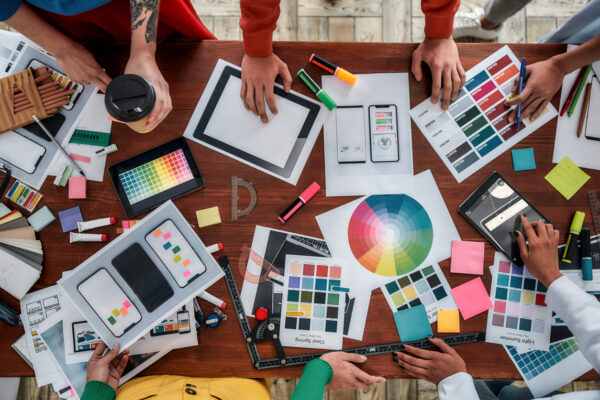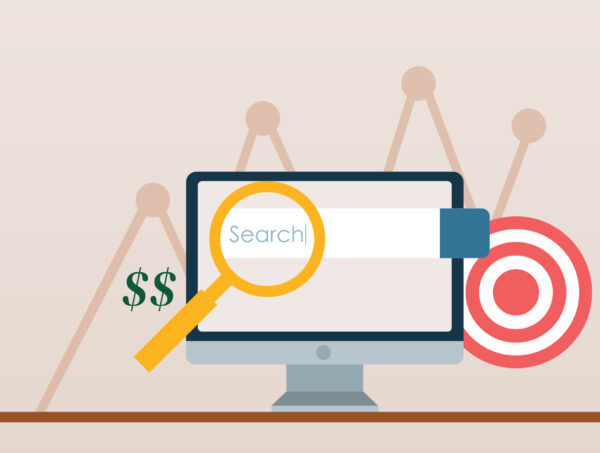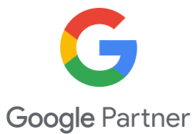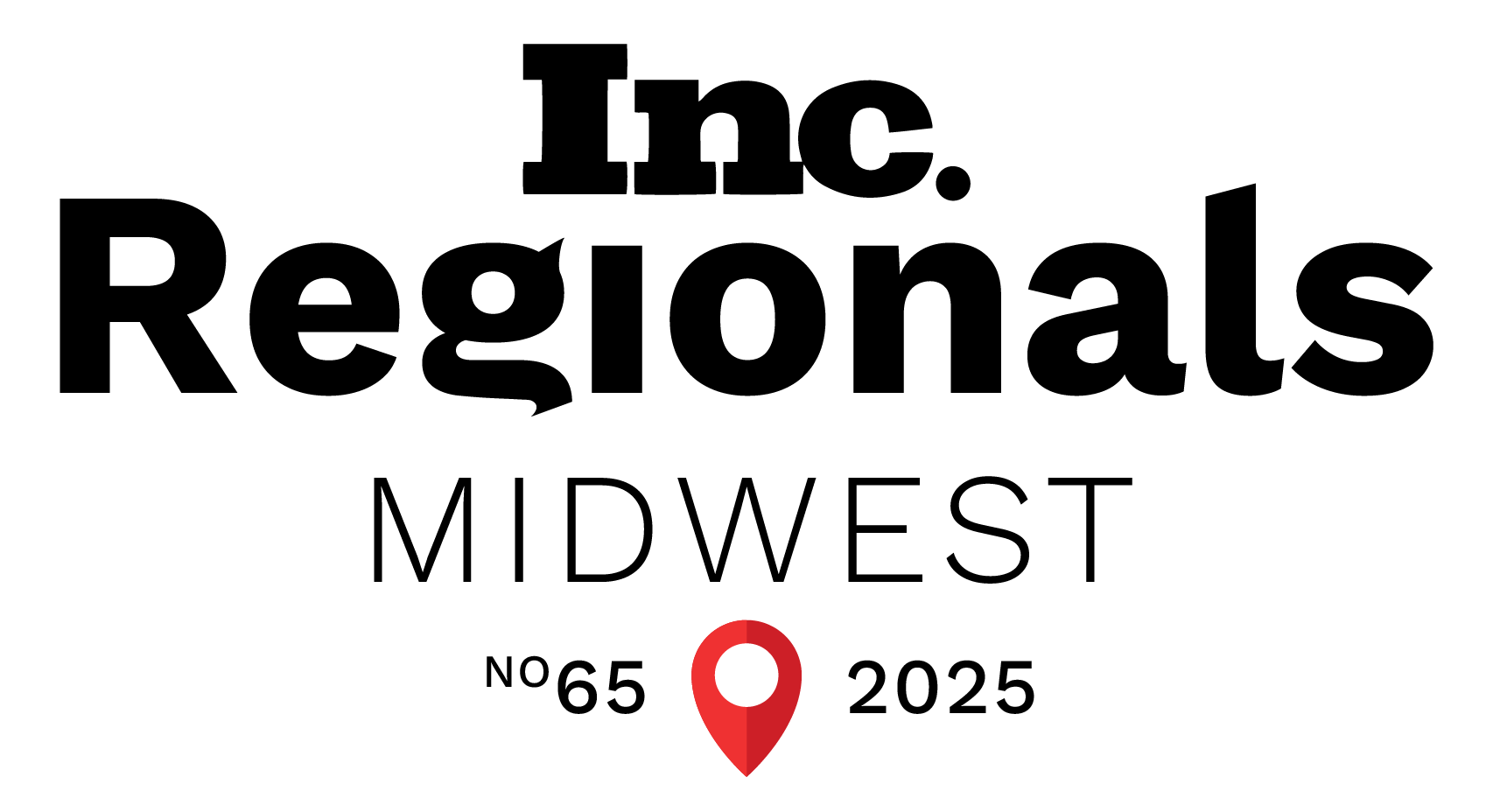
Designing a Company Logo That Speaks to Your Brand Identity and Customers

Designing a Company Logo That Speaks to Your Brand Identity and Customers
If you have worked in marketing or branding for any amount of time, you’ve likely studied iconic companies and their branding. Brands that are instantly recognizable for their logo, typeface, and color scheme have a larger-than-life impact on culture.
Think of brands like Supreme, Apple, Nike, and Target. From designer streetwear to electronics, from shoes to department stores, these are brands that have thought their identity through so thoroughly that these identities have been recognized by customers for decades.
These companies have invested a lot of time and money in building a consistent tone and look, and that all starts with the logo.
What’s in a Logo?
At its most basic, a logo is shorthand for how people, particularly customers, can identify your company. It can also be a statement about what your company does.
For example, Nike’s swoosh/checkmark underscores the brand’s “Just Do It” catchphrase. And the words “Burger King” sandwiched between two illustrated buns illustrates that you can get a sandwich wherever you see this logo stamped on a building
At the end of the day, your logo is about making your company recognizable to customers. If you take the time to conduct customer research, write down your story and keywords for your identity, and build out a streamlined style guide, you’ll have a clear idea of what you want your logo to be and why.
The logo process outlined below may feel a bit daunting, but doing this in-depth work when you’re designing your first logo or going through a company rebrand will help you make future creative decisions in a more uniform, intentional way.
How to Design Your Brand’s Logo
Build Out Your Brand Identity and Develop Your Creative Strategy
Your Brand’s Story
If you’re a nonprofit, a mission statement is likely within the bedrock of why you started doing business. However, developing a purpose statement in the for-profit space can be more challenging.
At the end of the day, the purpose of most for-profit businesses is to make money, but what is your unique offering along that path to purchase? What’s your origin story or background? Are you offering a niche service? Are you selling goods that are sustainably sourced? Are you providing a solution to a problem that hasn’t been done before? One great example of consumer branding is the shoe company Rothy’s.
Rothy’s shoes are made from recycled materials, comfortable, and machine-washable. While your brand may not have a consumer focus as niche as that, think about bigger companies that have an established identity. Target’s purpose statement is “To help all families discover the joy of everyday life.” Workshop a few purpose statements or background stories with your team and determine the kind of language you use to describe yourselves.
If you’re going through a brand redesign, think about how you could be more effective in your messaging about your purpose statement and company story. What wording is best for the public to see? What’s the hook? What has changed since you last established your brand identity?
Narrow Down Keywords
Now that you have your purpose statement, put together a word bank of 10-20 words or phrases that describe your company. Endeavor to have a mix of nouns (the “what” of your company), specific verbs (the “how”), and adjectives (the icing on the cake). You can even start implementing colors here that you think align with your identity, though we’ll flesh this step out more fully later on.
Write these keywords down and pick the ones you want to adopt as a company moving forward to inform how you talk about your brand internally and externally to your customers.
For example, if your company provides financial advice, you’ll likely want to pick words like “stability,” “professionalism,” and “trustworthiness” because that’s what you want to signal to your customers.
Identify Your Target Customers
Many brands develop personas as practice for envisioning their audience. Ask yourself these questions about your target customer:
- What is their age range?
- How much money do they make annually?
- Do they own a house or rent?
- Where do they live?
- Are they more heavily male, female, or nonbinary?
- What kinds of media do they consume?
- What social media platforms are they on?
If you’re going really in-depth, create two or three specific personas that reflect the kind of audiences you’re going to reach.
For example, as a financial institution, you could write out the persona of a 20-something woman making $70k annually and working on paying off her student debt. This woman gets a lot of her financial advice online and may follow certain financial influencers on Instagram.
Think about how this woman wants to be talked to by brands. What tone of voice and appearance will she respond to?
Identify When You’ll Use Your Logo
Once you’ve done this in-depth research into your brand’s story and who you’re trying to reach, gather your team of marketers, copywriters, and any designers to talk through the use cases for your logo.
How will you use your logo to reach your customers? Will it be on a T-shirt or other promotional materials? Or will you be using it primarily for digital assets and/or on a website?
Design Research
Now that you’ve got a well-researched idea of what you need your logo to do for you, it’s time to explore and get the design process started.
Workshop Your Logo Ideas
Once you have pinpointed your tone of voice, target audience, competitors, and your own identity, familiarize yourself with basic design principles. Color theory can be really helpful in this step. This process helps you see which colors complement each other, as well as which colors might be best to use in your industry.
For example, many financial institutions use blue in their logos because blue is associated with peace and calm, and companies that handle money want customers to feel at ease.
Research Comparable Brands
What are brands in your industry that you use as models when you think about how you want to present yourself? Some specific things to look for from competitors include their:
- Website
- Social media
- Packaging (if applicable)
- Brand colors
- Logos
Pick the things you like best about how your competitors represent themselves and bring those into your brand identity process. Then, look outside your industry and see what’s on trend among designers.
Sites like Dribble and Behance offer a wealth of recent work from some of the best designers working today. If you are an e-commerce business, it might also be helpful to look at how other companies use their branding—and logos—in their newsletter and e-blast design. Sites like Milled and Really Good Emails archive email marketing from around the world.
Create A Mood Board
Collect all the design inspiration you’ve gathered into a board. Most designers use digital boards on sites like Pinterest, but you can easily copy and paste images into PowerPoint or Google Slides.
If you feel there are several different categories of mood boards that your inspiration falls into, go ahead and create two or three separate boards and present those to your team to narrow down. Prompt your team members to identify why they like one mood board better than another, and why they think one will reach your audience better than the others.
This might seem like a lot of extra work to go through for a logo, but remember that this process is helping you develop your style guide for your entire brand, something you can reference for creative projects moving forward, such as your website, promotional materials, social media, and more.
Find out more details about developing your brand style guide here.
Work With a Designer
You’ve made it! It’s time to start the sketches for your logo design. Even if you’re working with an expert designer, it’s helpful for you to take a pencil and paper and sketch out a few options of what you have in mind first. You can give these ideas to the designer, along with the mood board, information on competitors, and your target audience profile. This homework you and your team have done will save you a lot of time and money down the road.
Connect with Metric Marketing to get information on our branding timeline, process, and rates.
An expert designer can help you with the particular aspects of making an impactful logo, including which font to use if it includes letters (sans serif, serif, or script), and what type of logo you want. There are so many to pick from!
Before your meeting with the designer, it’s a good idea to pick a few types you’d be comfortable exploring. Here’s a non-exhaustive list of the categories that logos fall into:
- Word mark: This is simple and involves placing your company name in front of a specific background (think Johnson & Johnson).
- Brand/pictorial mark: This is an image representing a real-world object that connects to your brand name or the service you offer. For example, Shell Oil uses the icon of a shell.
- Combination mark: This type of logo uses both a symbol and a wordmark, giving you some room to experiment with different placements of the word and symbol. Burger King is a classic example of this type of logo.
- Abstract: An abstract logo is more geometric, and often a great fit for brands that want something completely unique from competitors. You do need to be careful to build up a clear idea of how your brand will be recognizable if the logo itself isn’t giving a consumer much information. Spotify’s green circle with the three white dashes inside is a good example of an impactful abstract mark.
- Mascot: Think of your favorite sports team! From the Minnesota Vikings to the Miami Dolphins, these teams use illustrated people or animals to represent their brand in a fun, approachable way. It’s not for every company, but sometimes these colorful icons can be a great fit—check out Duolingo’s owl for some inspiration outside of the sports world.
Other types of logos include monograms, emblems, or even symbols. At this point in the process, try to think as practically as possible and narrow down your choices.
Remember to keep your developing style guide and company story in mind as you and the designer work together to come up with a first round of logo candidates.
Finalize Your Company Logo
At this point, we like to tell clients to really get picky, especially if you have several logos that are strong contenders.
Ask yourself in-depth questions about each. Here are a few we find useful:
- Does this logo fit in each of the contexts we have planned for it?
- Is the logo memorable, evocative, and simple?
- If you’re using your logo on social media, would it work as your profile picture?
- Will this logo stand the test of time? This is a hard question to answer but think about logos that have aged well—versus ones that look outdated—and try to apply some of that thought to your own logo. If you’re stuck here, research a few brands that have been around for over twenty years and see how their logos have changed (or not) over the years.
- If you have the chance to run focus groups or audience surveys, get insight from the people you’re hoping to reach with your business on which logo they prefer.
Once you’ve chosen your logo, write down the rules that will be applied in your company style guide. Ask yourself if your logo can be used with a transparent background. Are there certain colors it should not be placed against? If it contains both text and pictorial elements, can those be separated in certain cases?
Some brands go more in-depth in this section, and you can pick and choose what makes the most sense for you:
- Is the logo printed at the top or bottom of the company letterhead?
- How do we want the logo displayed in the company email signature?
- How do we want the logo displayed on the website, and how frequently? On every page, or just on certain parts?
You’re building out your brand style guide through this process, a document that can be impactful for how your company looks and sounds for years to come. From how your logo appears on documents, to whether you use the Oxford comma or spell out titles of C-suite executives, this will be the guidebook for your messaging—both internally and externally.
For more information on the specific elements of a brand style guide, check out this resource from HubSpot.
Metric Marketing Can Help Design Your Logo and Build a Strong Brand Identity
For such a small image, a logo certainly takes a lot of time and effort. Designing your company or nonprofit’s logo can be a very involved process, whether you’re redesigning an existing logo or creating one for a brand-new venture.
We recommend going through the steps of competitor and customer research and telling your brand’s story because it’s a helpful practice. It can also make bigger projects down the road—like a website redesign or building out a suite of promotional materials—much easier. So it’s worth it to put the time into building a strong brand identity.
Metric Marketing’s brand and design experts are here to work with you, whether you want to hop on a quick advisory call or sign up to go through an in-depth logo design process.
Connect with us for a chat. We can’t wait to hear from you.
Ready to Inquire?







